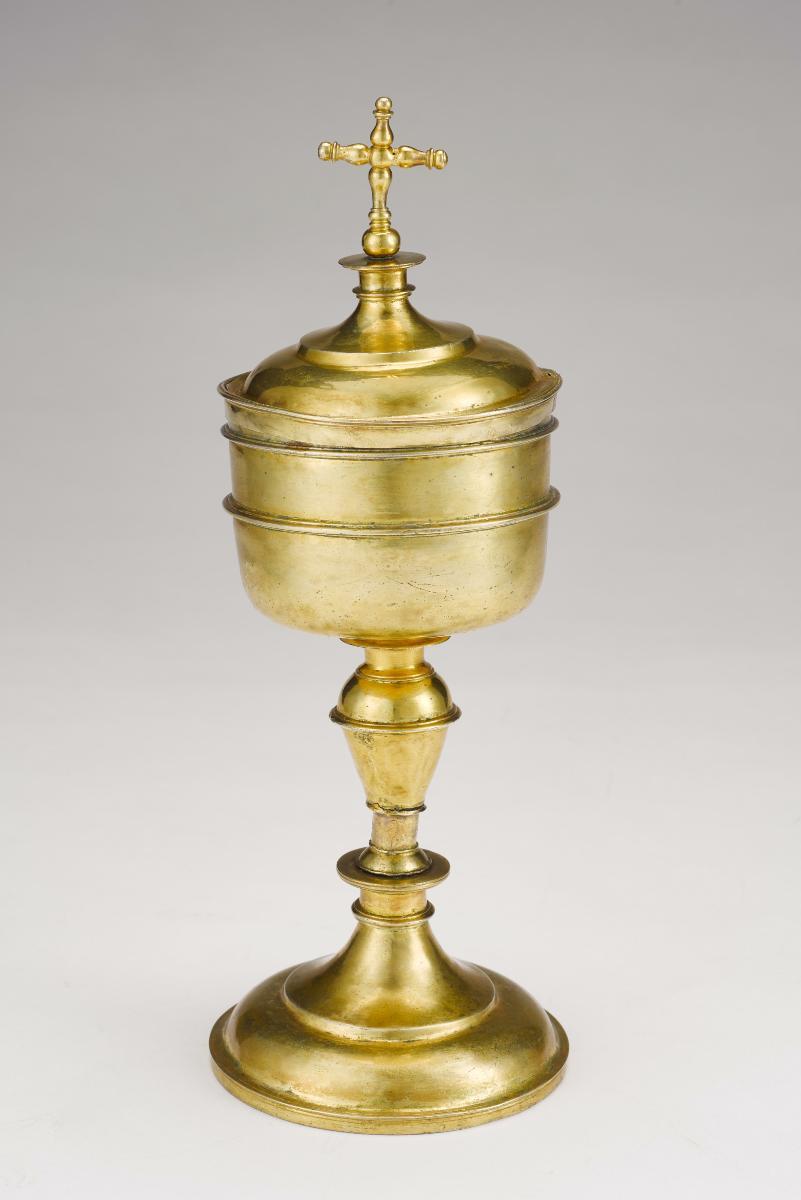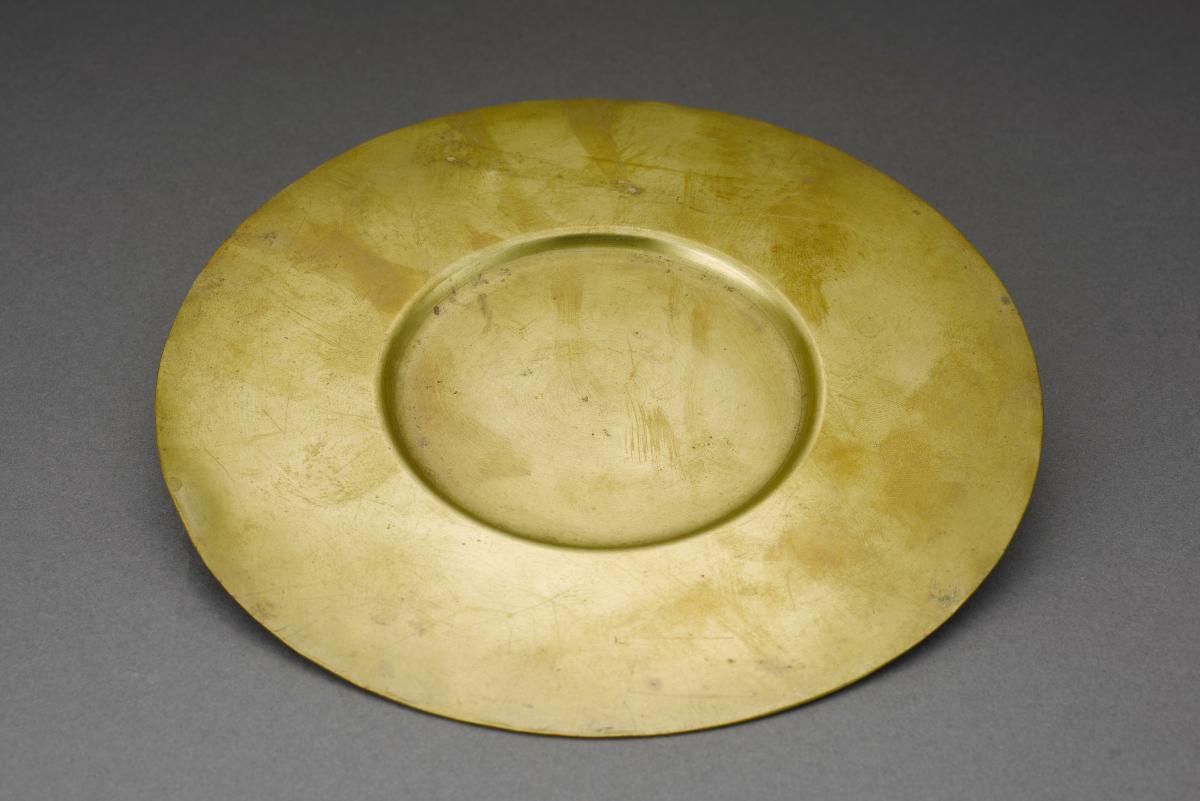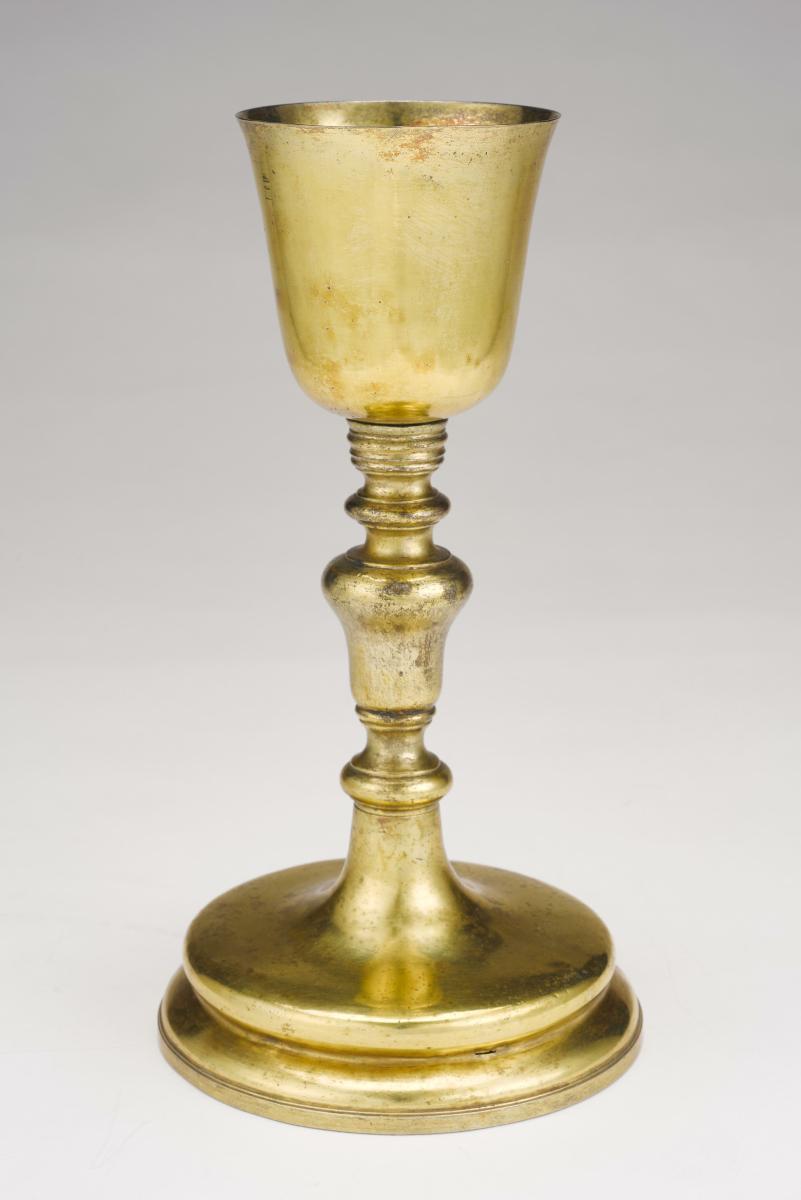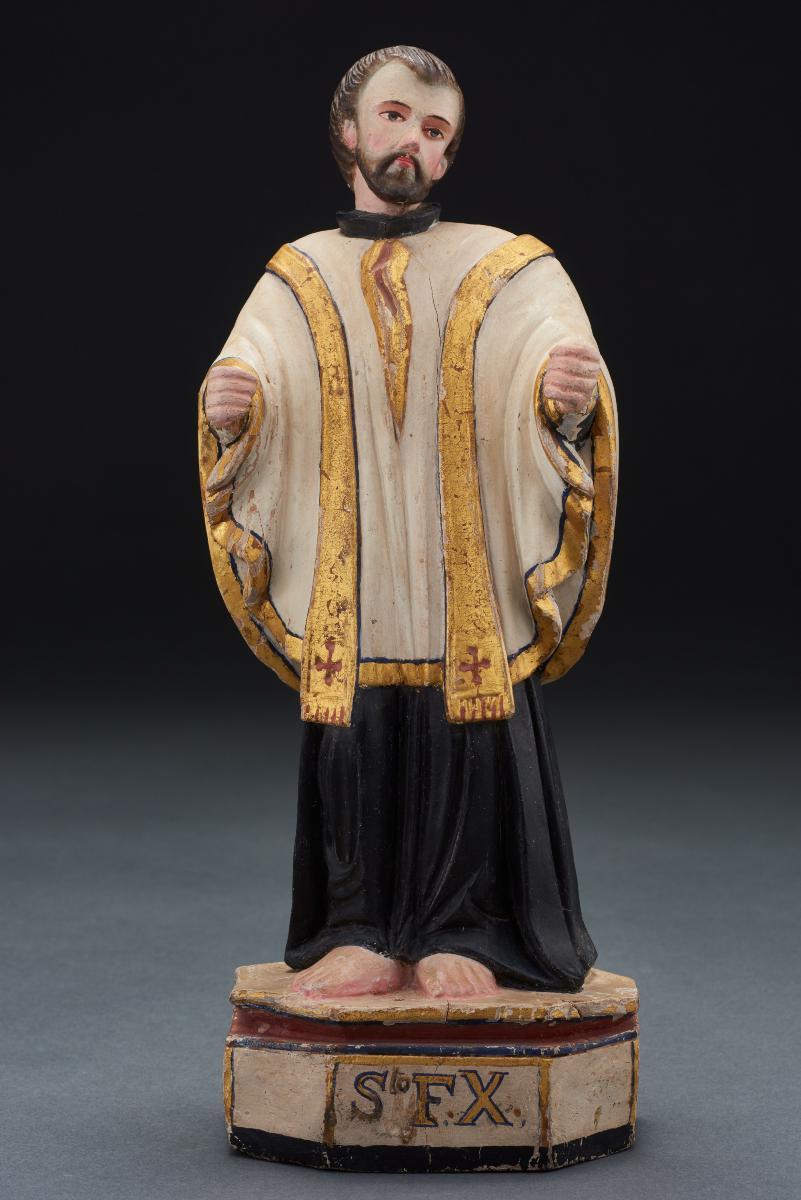This ciborium was used to receive Holy Communion. A ciborium ('container') is a covered container used in Roman Catholic and associated churches to store the consecrated host of the sacrament of Holy Communion. Usually a ciborium is an architectural feature in some churches. It looks like a chalice but the bowl is rounder than conical. The cover is commonly surmounted by a cross or other sacred design. In some cases, it may be veiled to indicate the presence of the consecrated hosts. Other containers for the host include the paten (a small plate) or a basin (for loaves of bread rather than wafers) used at the time of consecration and distribution at the main service.The arrival of Christianity in Goa is generally attributed to the Portuguese. In 1542, with the advent of the Portuguese Roman Catholics notably the Jesuit priest, St Francis Xavier, many of the local residents, mostly Hindus, were converted to Christianity. Due to large scale missionary activity during the Goan Inquisition (1560-1812), the numbers of converts increased rapidly. The conversion of Goa to Catholicism continued with the various religious orders that came during the 16th century, which included the Dominicans (1548) and the Augustinians a few years later.















